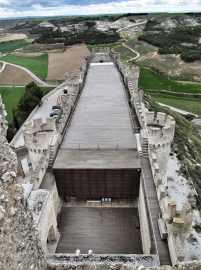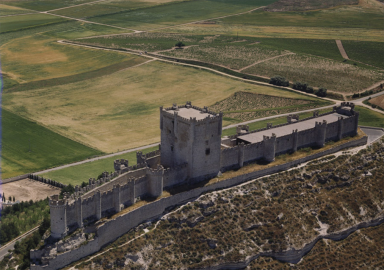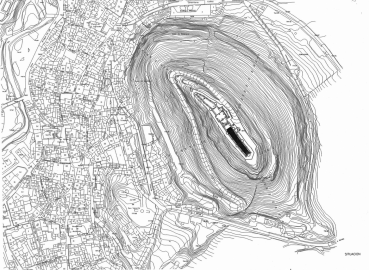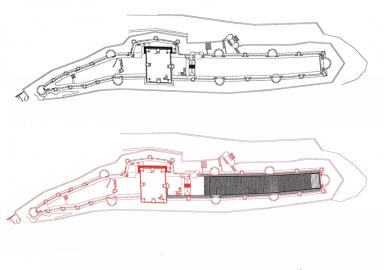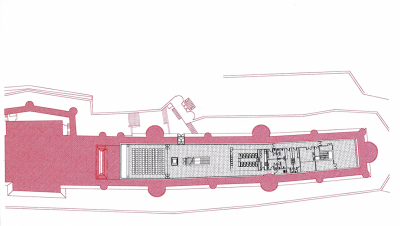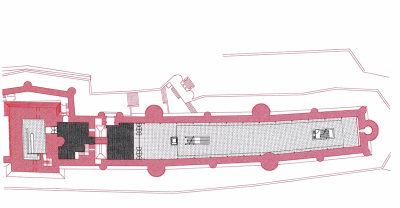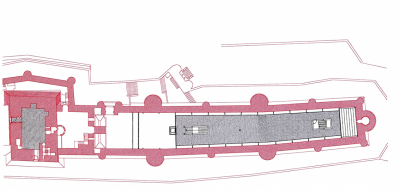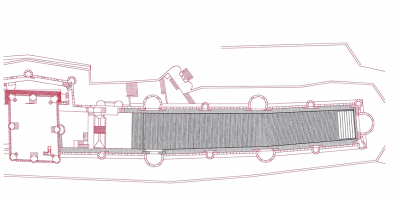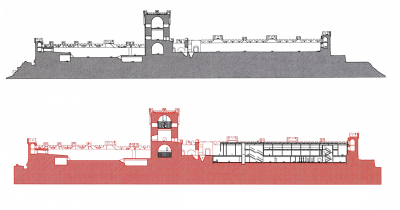Peñafiel Castle Reestructuration and Wine Museum adaptation
In a privileged location on the Castilian plateau, on the breakwater that separates the Douro and Duratón valleys, the castle of Peñafiel visually dominates the seven ditches that surround it in a north-south direction.
Inscribed in one of its patios is the Wine Museum, a steel and wood box hidden under the height of the battlements so as not to change the image of the fortress. From the old promenade, recovered as an ambulatory, you can access the deck, which offers the best views of the surroundings.
A sequence of articulated spaces leads to the interior of the museum; from an outside patio—located in the northern end—and through a hallway protected by a wooden lattice, you can reach the large glazed surface of the entrance. Having crossed the threshold, the rough perimeter walls are kept in their original state, with the aim of incorporating them as another piece of the museum. Of the built 2,750m2, distributed over three floors, half are dedicated to exhibition spaces, while the rest is distributed between the assembly hall, the tasting room, the shop and the library.
The materials contain a strong symbolic charge that links the new building with the construction tradition. The wood refers to the ephemeral skeleton that was part of the construction of the medieval forts and also alludes to the habit of storing wine in barrels, acquiring a special role by being used in various ways: from the Lapacho floors on the mezzanine and cover surfaces , up to the covering of ceilings or interior facings and the conformation of the structure by means of laminated fir beams. The succession of rooms along a longitudinal route encourages the visitor to become familiar with the cultivation systems and with the processes of making the different types of broths. Inside the old walled enclosure, this museum ferments like good wines do.

